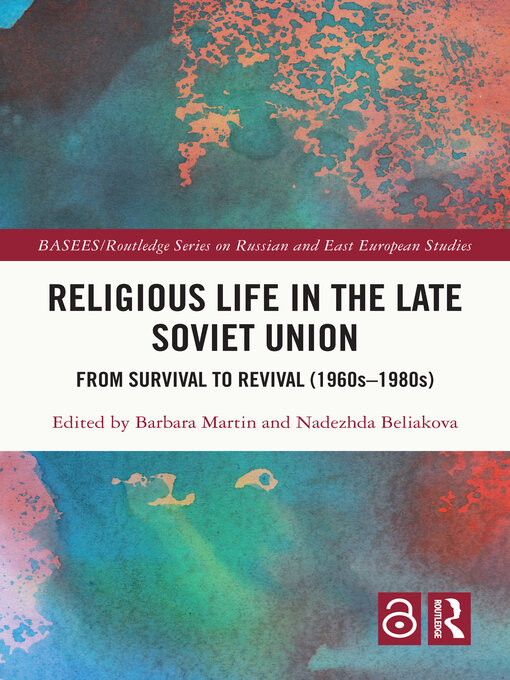This book presents the first large overview of late Soviet religiosity across several confessions and Soviet republics, from the 1960s to the 1980s. Based on a broad range of new sources on the daily life of religious communities, including material from regional archives and oral history, it shows that religion not only survived Soviet anti-religious repression, but also adapted to new conditions. Going beyond traditional views about a mere "returned of the repressed", the book shows how new forms of religiosity and religious socialisation emerged, as new generations born into atheist families turned to religion in search of new meaning, long before perestroika facilitated this process. In addition, the book examines anew religious activism and transnational networks between Soviet believers and Western organisations during the Cold War, explores the religious dimension of Soviet female activism, and shifts the focus away from the non-religious human rights movement and from religious institutions to ordinary believers.
- You Turn My Pages
- New Ebooks
- New YA Additions
- Michigan Notable Books
- New Kid Additions
- Christian Romance
- Nordic Noir/International Crime
- LGBTQ+
- Native American Heritage
- Hooked on Classic Literature
- Addiction and Recovery
- Self-Improvement
- U.P. Notable Books
- See all
- New Audiobooks
- Suspenseful Thrillers (Audiobooks)
- Non-Fiction
- Available Now
- Audiobooks for Your Family Road Trip
- Narrated by the Author
- Historical Thrillers
- See all
- Travel & Outdoor
- Fashion
- Crafts & Hobbies
- Science
- Health & Fitness
- Celebrity
- Home & Garden
- Hunting & Fishing
- Food & Cooking
- Sports
- Culture & Literature
- Tech & Gaming
- Business & Finance
- See all

